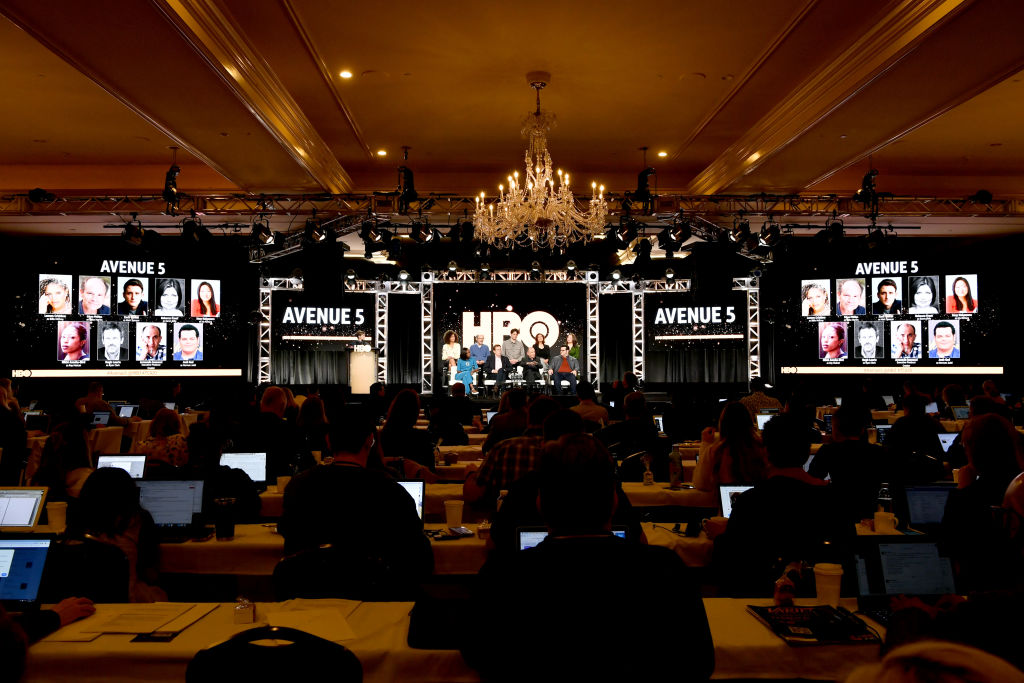Is ‘Avenue 5’ Scientifically Accurate?
The mind behind Veep is back on HBO with a brand new series. Avenue 5, a futuristic comedy, launched on the premium cable channel on Jan. 19, and while the jury is still out on whether the series will make it to a second season, viewers who tuned in have a couple of big questions. The biggest question about the series is whether or not the technology mentioned is actually real. The answer might surprise you.
What is Avenue 5 about?
Avenue 5, which premiered on Jan. 19, takes place aboard an interplanetary cruise ship. A system malfunction throws the ship off its course and changes the nature of its trajectory by two degrees. Two degrees might not seem like a big deal, but the change in direction will leave the ship orbiting the earth for years, instead of the eight-weeks that the trip was intended to last.
Hugh Laurie, as Captain Ryan Clark, will need to figure out a way, along with his crewmates, to keep everyone safe and in order while they struggle to figure out how to get back to earth. Dwindling supplies, however, could lead to mutiny aboard the luxury craft. The series, at the moment, has four episodes planned for its inaugural season and opened to lukewarm reviews.
Is the science behind Avenue 5 real
How well the series will perform overall remains to be seen, but one major concern is whether or not the science mentioned in the series is legitimate. Screenrant explored the science behind Avenue 5 in-depth and found that much of the science is on point, although a great deal of Avenue 5 is hypothetical.

It’s hard to figure out how space travel would work at such distances, especially in a recreational capacity, but some of the technology mentioned actually exists. In one episode, the concept of a “poop shield” is brought up. In short, human waste is used the protect passengers from radiation. As far fetched as it sounds, the concept is actually real. In an experimental capacity, human waste, when dehydrated, can protect against cosmic rays better than metal.
The problem that throws the space cruise off its course is based on real science, too. Armando Iannucci, the mastermind behind Avenue 5 and Veep, explained that the series is set only about 30 years in the future and is entirely based on real physics. The “gravitational slingshot” effect that will keep the cruise orbiting the earth instead of landing is actually rooted in real science, according to Slash Film.
Could something like the scenario depicted in Avenue 5 actually happen though? Well, that’s anyone’s guess. Since space cruises aren’t yet a real thing, it’s hard to ascertain how a malfunction would effect such a ship. It’s all based on real science, though, lending some credence to the premise.
Space tourism is a real thing
While Avenue 5 is obviously a fictional comedy, the idea of space tourism is very real, or, at the very least, several companies want to make it a real thing. The Express notes that Space X and Virgin Galactic are racing to be the first company to offer space travel for recreational purposes. Virgin Galactic is aiming to be the first company to provide suborbital space travel, at the tune of around $250,000 per person.
The notion of a months-long trek, like featured in Avenue 5, is not currently a reality and, frankly, doesn’t seem to be on the horizon anytime soon. A trip to the moon, something that several companies are exploring, would take roughly a week. Cool Cosmos notes that it takes a spacecraft approximately three days to reach the moon right now, the return trip is about the same. The industry remains unregulated, however, and while several companies are hoping to launch, at least, suborbital flights in 2020 and 2021, no specific launch dates have been set.


